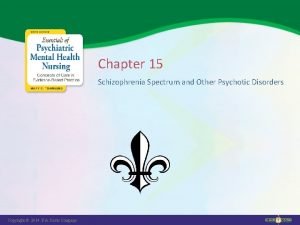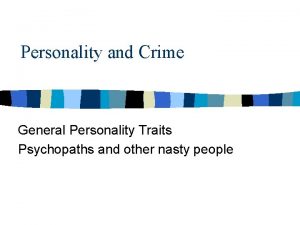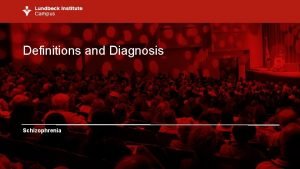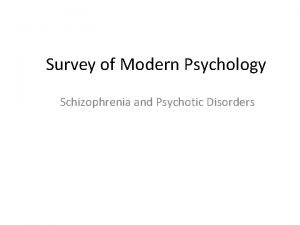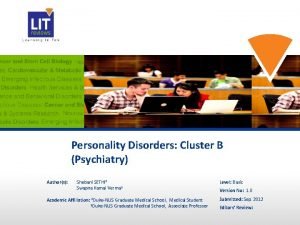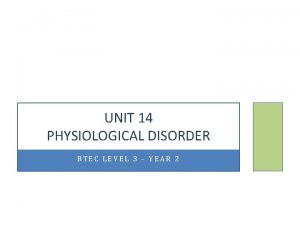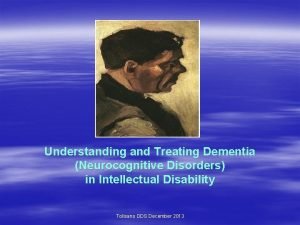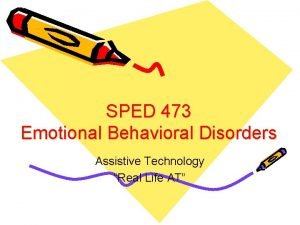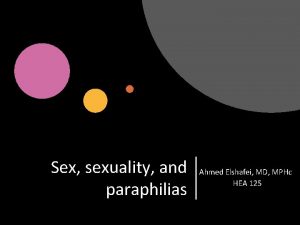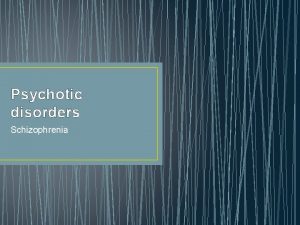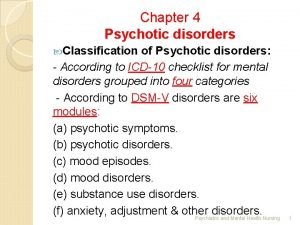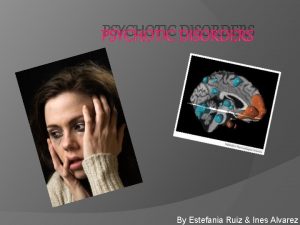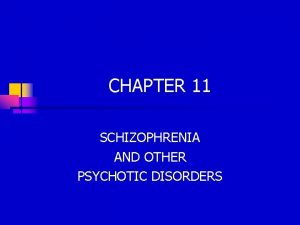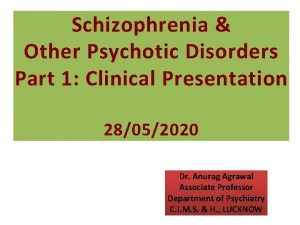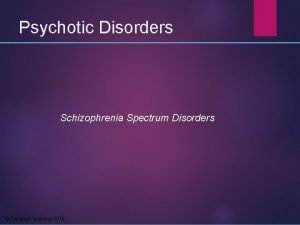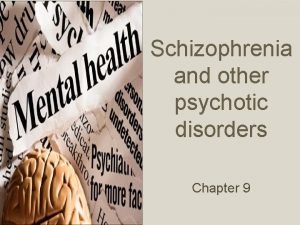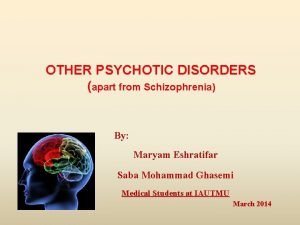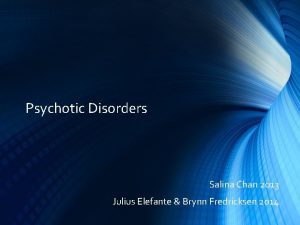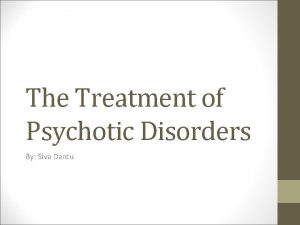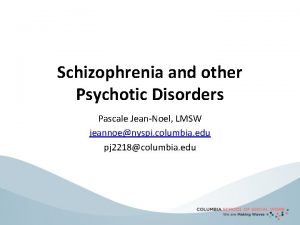Disorders Characteristics of Psychotic Disorders CLINICAL CHARACTERISTICS OF














- Slides: 14

Disorders Characteristics of Psychotic Disorders

CLINICAL CHARACTERISTICS OF SCHIZOPHRENIA

Learning objectives w You must: n n Identify two or more clinical characteristics of schizophrenia Know and explain differences in the prevalence of this disorder in different populations w You should: n Explain the differences between Type 1 and Type 2 w You could also: n Outline the difficulties when making a diagnosis

WHAT IS SCHIZOPHRENIA? w Schizophrenia is not a multiple personality w It is a psychotic disorder characterized by the loss of contact with reality w It has many different manifestations with a few shared features w formerly referred to as: n Lunacy, madness or insanity http: //www. bbc. co. uk/health/emotional_health/mental_health/disorders_schiz. shtml

NEUROSIS OR PSYCHOSES? w NEUROSIS w PSYCHOSES w Mental health issues that fall just outside where the individual has normal functioning but lost touch with reality and the individual is in touch is not on a continuum with reality and knows normal mental health they are ill

CLASSIFICATION w POSITIVE SYMPTOMS – TYPE 1 n Distortion of normal function Delusions, hallucinations, disorganised speech, under the control of an alien force, disordered thinking http: //www. youtube. com/watch? v=z. BOXrf. Ndx. TE w NEGATIVE SYMPTOMS – TYPE 2 n Lack of normal function Apathy, no emotion, flat effect, social withdrawal, Alogia

SUB TYPES w PARANOID n Delusions, persecution, hallucinations w CATATONIC There are more than n Immobile, catatonic stupors these but these are n Wild, uncontrolled movements the main ones w DISORGANISED n Giggling, pulling faces, flat effect. w RESIDUAL n low level positive symptoms but psychotic symptoms present w UNDIFFERENTIATED n Does not fit into any of above

ACTIVITY w Difficulties in categorizing and forming a diagnosis

DIAGNOSIS ICD & DSM • Can only be done by a psychiatrist • As yet there is no physical way to diagnose • Current research is looking at blood test or eye tracking

ACTIVITY w Find & Outline the ICD / DSM clinical Characteristics.

Schizophrenia prevalence w 1% lifetime risk in general population w Holds true for most geographical areas although rates do vary n Abnormally high in Southern Ireland, Croatia; significantly lower rates in Italy, Spain (Torrey, 2002) w Risk factors include minority ethnicity, urban residence w How might differences in rates of diagnosis be explained?

Schizophrenia onset Source: CIHI

PROGNOSIS w ‘Rule of the thirds’ (rule of thumb): n 1/3 recover more or less completely n 1/3 episodic impairment n 1/3 chronic decline w With treatment about 60% of patients manage a relatively normal life w Prognosis better in non-industrialised societies

Homework w Schizophrenia work pack
 Types of psychotic disorders
Types of psychotic disorders Psychopath personality
Psychopath personality Psychotic disorder
Psychotic disorder Types of delusions
Types of delusions Difference between neurosis and psychosis
Difference between neurosis and psychosis Cluster traits
Cluster traits What are physiological disorders health and social care
What are physiological disorders health and social care Unit 14 health and social care level 3
Unit 14 health and social care level 3 Neurocognitive disorder
Neurocognitive disorder Bipolar and other related disorders
Bipolar and other related disorders Bipolar and other related disorders
Bipolar and other related disorders Flinders model of care
Flinders model of care Emotional disturbance assistive technology
Emotional disturbance assistive technology Somatic symptom disorder
Somatic symptom disorder Paraphilia disorders
Paraphilia disorders
